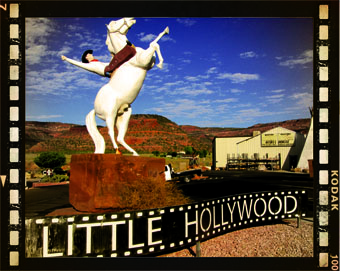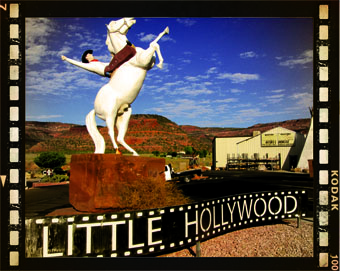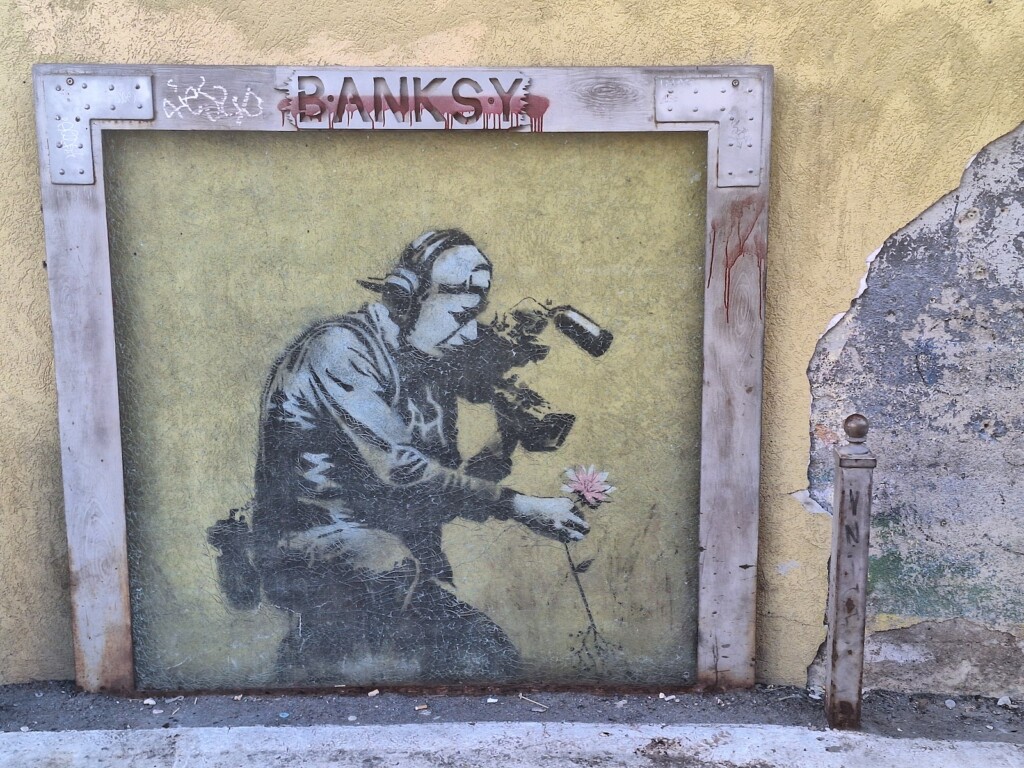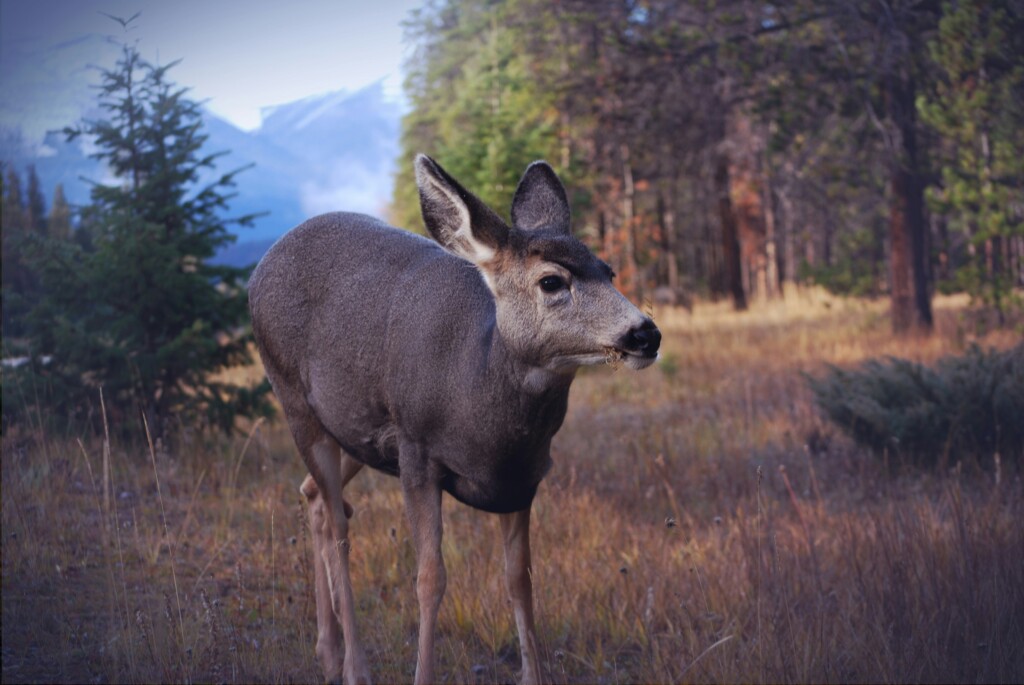
Kanab became famous for providing some of the best backdrops for western film heroes riding off into the sunset. It was such a hotbed for Hollywood stars that the town earned the nickname “Little Hollywood.” Situated in Kane County with easy access to the “Grand Circle”, a series of state and national parks and monuments including Bryce Canyon National Park, The Grand Canyon, and Zion National Park, Kanab City and residents worked to make a welcome home for Hollywood stars and filmmakers.
With its desert plateaus, red rock cliffs and “Frontier Movie Town” look—an entire frontier Main Street perfect for shoot-outs and chase scenes— Kanab became a one-stop-shop to make on-location westerns. But the unsung heros of Kanab were the residents who lured Hollywood directors by offering the logistical support which would have otherwise made such films cost prohibitive. Kanab offered not only the backdrops, but Kanab residents were extras and took care of film crews as well. The whole town got involved as extras, stuntmen, set designers, location scouts, chauffeurs, and wranglers.
“Kanab was a well-oiled machine,” says former extra and location scout Dennis Judd. “One group of locals was chosen to be wranglers and take care of the horses. Others drove the film crews around.”
The Parry Lodge is a colonial-style home that the Parry brothers purchased in 1931 to house film crews and actors. The Lodge offered excellent accommodations for most of the stars we are about to mention. The hallways ooze western cinematic history with photographs lining the walls and many rooms are named after the stars who stayed there. Current owner Steve Heaton bought the lodge from the Parry brothers and keeps town traditions alive with free Kanab verite movies shown at the site’s Old Barn Theatre.
While the popularity of the western genre has ebbed and flowed, many of the biggest Hollywood stars were stationed in Kanab to make movies including Clint Eastwood, Ronald Reagan, Dean Martin, Gregory Peck, Omar Sharif, Burt Reynolds,Raquel Welch, Charlton Heston, Burt Lancaster and Lloyd Bridges. The list goes on and on.

The most acclaimed western movie director was John Ford, who won five Academy Awards. Ford began his career making westerns in 1917 in the silent film era. Once talkies became popular the western genre began to die. From 1926-1938 westerns became associated as B-movies- low-budget hoofers for second-rate actors and directors. John Ford was an exception. He was one of the few big studio movie directors to maintain an interest in the western genre. In 1939, when he filmed “Stagecoach,” westerns once again became hot as a pistol. He cast a lanky actor named John Wayne as the Ringo Kid and people came in droves to see the movie. Ford returned to Kanab in later years to film “Drums Along the Mohawk” and “Rio Grande.”
Nearly all early silent film westerns portrayed Native Americans as stereotyped savages.. Cowboys were brave, proud and good—the simple good vs. evil characters lent well to the silent film era. Talking allowed directors to write western characters and plotlines with more nuance. Ford often provided a sympathetic portrayal of Native Americans with the characters and protagonists as less good vs. evil moral tales but stories that required the audience to interpret scenarios and situations.
The Western genre realized a resurgence between the 40’s and 50’s, beginning with the popularity of the Lone Ranger. This time period was the heyday for Kanab.
Talking to Kanab residents it’s clear that today’s movie companies are looking for greener pastures and cheaper costs. “It’s all dying. The old timers are almost all gone,” Dennis says. Only pictures and stories of the Hollywood stars and directors remain. But many local businesses are working hard to keep Kanab’s western spirit alive. At the Little Hollywood Movie Museum visitors can wander through sets such as the adobe homestead from “The Outlaw Josie Wales” starring Clint Eastwood.
Photographer Tom Forsythe owns the museum and it was the red rocks and beautiful scenery that brought him here as well. “I was a struggling artist, who needed something more stable, not that this is all that stable,” he says. Tom integrates photography and classic photos from his studio into the business. The movie “John Carter” rented some of his old tack, and he used prop rental to pay for the “ Little Hollywood Land” sign. He also dishes up chuck wagon meals and directs the “How The West Was Lost” show where audience members can participate as cowboys, cavalry, coyotes, saloon girls, pioneers, and Indians. “The world has a vision of the West that was created here. It always amazes me how I can get a seventy-year-old woman to dance in a circle like an Indian.” Tom says.
Many visitors are rediscovering Kanab as the hub of the tourism wagon wheel it used to be, a launching pad where people can spend three to four nights as they vacation to the magnificent sites surrounding the town. The town is a place where the Old West, the New West, and Once Upon a Time in the West all converge. ”People want experiential vacations with history,” says Browning. That’s exactly what they’ll find in Kanab. §
previous Utah Stories’ article on Kanab documentary from 2009






